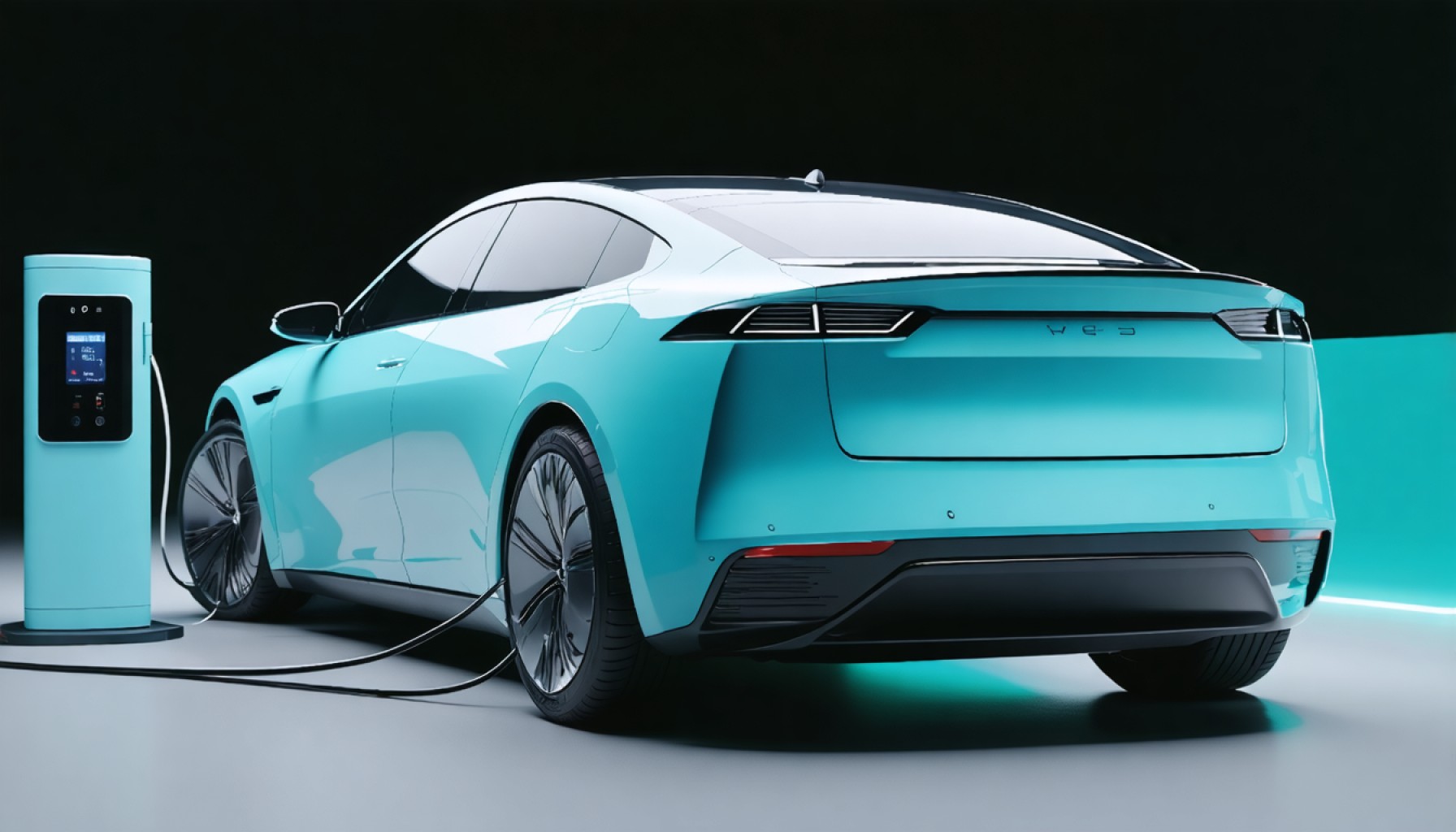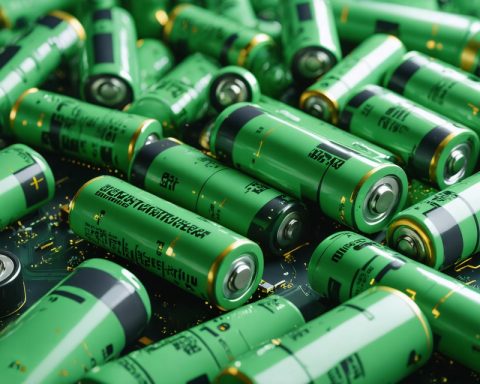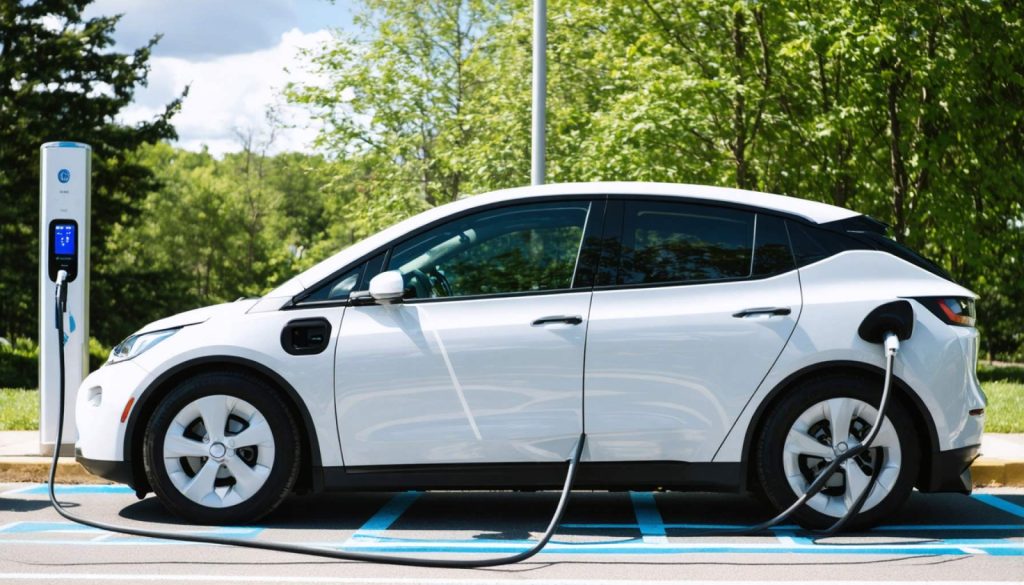- EV batteries drive a cleaner future and hold untapped potential beyond their on-road life.
- Recycled EV batteries are rich in valuable materials like cobalt and lithium, with up to 95% reclaimable.
- These batteries are not waste; they support the circular economy and reduce demand for new raw materials.
- Recycling infrastructure transforms potential waste into opportunities for new energy solutions.
- Scarcity in recycling facilities arises from the longevity of EV batteries surpassing expectations.
- Recycling EV batteries aligns profit with environmental preservation, setting standards for e-waste management.
- Participation in recycling can prevent hazardous materials from harming the environment.
- Understanding EV battery lifecycles empowers sustainable innovation and coexistence with nature.
Beneath the sleek exteriors of electric vehicles (EVs) lies a marvel of modern engineering: the battery. These powerhouses are propelling the future of transportation toward a cleaner horizon. Yet, a shadow of misunderstanding often looms over their lifespan. When an EV battery retires from its duties on the road, its journey doesn’t end. It transforms into a goldmine of opportunity.
Imagine a second act where discarded EV batteries become treasures in the quest for sustainability. These forgotten giants are not destined to linger in landfills but instead, herald the age of the circular economy in the automotive world. Laden with precious substances like cobalt, nickel, magnesium, and lithium, each can be meticulously harvested. Astonishingly, up to 95% of these valuable materials can be reclaimed and reborn, breathing life into new batteries or bolstering energy storage systems.
As the global demand for these precious metals intensifies, so too does the motivation to repurpose every ounce from spent EV batteries. They represent not just an end, but a beginning—making their way into new products, powering homes and communities, and reducing the pressure on mining for new raw materials.
Contrary to popular belief, the journey of an EV battery is far from a hazardous trek to the landfill. Thanks to cutting-edge recycling technologies, EV batteries are rarely discarded as waste. Instead, a robust infrastructure ensures their materials are cycled back into the economy, proving them far too valuable to discard. Recycling facilities today face an unusual dilemma of scarcity, where the enduring nature of these batteries means fewer retirements than anticipated.
The allure of profit aligns effortlessly with the ethics of preservation, turning potential waste into wealth. This scenario underscores a pivotal truth: responsible handling and recycling of EV batteries contribute significantly to mitigating environmental risks and setting a global standard for electronic waste management.
As a society, the beckoning call is clear: Participate in this transformative journey. Advocate for recycling not just with EV batteries but with all electronics, to ensure hazardous materials don’t tarnish our earth. By understanding the lifecycle of EV batteries, we empower ourselves to champion a future where innovation and nature coexist harmoniously.
In a world eager for sustainable solutions, the second life of an EV battery stands as a testament to ingenuity. When we look at these energy cells, we should see more than mere components—we should glimpse a sustainable future already in motion.
The Astonishing Second Life of Electric Vehicle Batteries: A Sustainable Revolution Unfolds
The Marvel Behind Electric Vehicle Batteries
Electric vehicles (EVs) signify a new era in transportation, underpinned by the impressive engineering of the battery. These batteries contain valuable materials such as cobalt, nickel, magnesium, and lithium, each playing a crucial role in powering our greener future. The lifespan of these batteries, however, doesn’t conclude at the end of their vehicular journey. Instead, they open up a realm of opportunities in sustainability.
What Happens to EV Batteries After Their “Death”?
Second Life Potential
1. Energy Storage Systems (ESS): EV batteries, once retired, can be repurposed for energy storage solutions. These systems help to store power from renewable sources like solar and wind, thereby minimizing reliance on non-renewable power sources. For instance, Nissan and Tesla recycle and reuse EV batteries for home energy storage systems.
2. Raw Material Recovery: With efforts to recover up to 95% of the materials, recycled batteries contribute to the production of new batteries, reducing the need for mining new raw materials. This aspect of the circular economy ensures less ecological disruption and lower carbon emissions in material extraction.
Misconceptions and Realities
– Landfill Myths: Contrary to popular belief, EV batteries are rarely discarded in landfills. Technological advancements in recycling enable the extraction of valuable materials, making EV batteries economically feasible to recycle, rather than discard.
– Lower Retirement Rates: Rather than facing a deluge of expired batteries, recycling facilities often encounter a shortage due to the longevity of EV batteries. This ironically hampers the ability to fully scale recycling operations.
How-To Steps & Life Hacks: Repurposing Batteries
– DIY Solar Power Storage: Old EV batteries can be integrated into home solar systems for energy storage, offering cost savings on electricity bills. However, specialized knowledge or professional assistance is advisable to safely implement this solution.
– Electronic Recycling Advocacy: Ensure that all electronic waste is properly channeled to recycling facilities. Advocate for recycling initiatives in your community to amplify sustainability efforts.
Real-World Use Cases
– Urban Energy Projects: Some cities employ reused EV batteries to store energy for street lighting, improving energy efficiency and reducing costs.
– Commercial Energy Backup: Businesses increasingly explore using repurposed EV batteries as backup power sources to maintain operations during outages.
Market Forecasts & Industry Trends
According to a report by Allied Market Research, the global electric vehicle battery reuse and recycling market is projected to reach USD 11.86 billion by 2030, expanding at a CAGR of 37.1% from 2021 to 2030. This growth underscores the advancing technologies and increased acceptance of recycled batteries in various sectors.
Controversies & Limitations
While the benefits are immense, the recycling process is not without challenges. Currently, only a few countries have established a robust infrastructure for recycling, leading to a need for international cooperation and technological innovations to handle the growing EV market’s waste.
Recommendations for a Greener Lifestyle
1. Support legislation: Encourage policies that promote recycling and penalize improper disposal of electronic waste.
2. Educate yourself and others: Stay informed about sustainable practices and share this knowledge with your community.
3. Invest in green technology: If possible, support companies and products that emphasize sustainability in their operations.
Conclusion
Understanding and participating in the lifecycle of EV batteries not only promotes a circular economy but also sets a precedent for the handling of other electronic waste. By advocating for the proper recycling and repurposing of EV batteries, we can partake in a transformative journey toward a sustainable future.
For more innovative ideas and advancements, follow industry leaders like Tesla and Nissan in their pursuit of environmental stewardship. Here’s to a future where technology and ecology thrive side by side.










